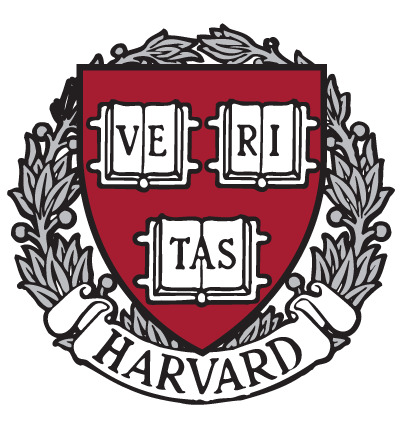
A group of researchers based at Harvard Medical School have retracted their 2019 paper in Nature after a data sleuth detected evidence of suspect images in the article.
The move comes ten months after the journal first heard from the sleuth, Elisabeth Bik.
The paper, “Fatty acids and cancer-amplified ZDHHC19 promote STAT3 activation through S-palmitoylation,” came from the lab of Xu Wu, of the Cutaneous Biology Research Center at Massachusetts General Hospital, and his colleagues. It appeared last August — and immediately caught the attention of Rune Linding, who flagged it for Bik, who in turn noticed several regions of concerning duplications in a few of the Western blots that appeared in the paper.
On August 29 of last year, Bik tweeted:
Nature responded the same day:
As Bik told Retraction Watch, however:
It still took 10 months for them to respond. They did not send me a notification until after they published the retraction online today. After I tweeted that the paper was retracted, they did send me a notification per email.
In those ten months, the paper has been cited five times, according to Clarivate Analytics’ Web of Science. Here’s the retraction notice:
We, the authors, are retracting this Letter owing to anomalies in Figs. 2j, 3a and 3d. We and the Nature editors reviewed the data and found that these anomalies were present in the digital scans of the original western blot films, which could not be located for further examination. Although repeat experiments at the time of writing the paper have reproduced the data, the anomalies undermine confidence in the published Letter. We therefore believe that the most appropriate course of action is to retract this Letter in its entirety. We thank the readers who brought the issues to our attention, and apologize to the scientific community. We remain confident that the key findings of the Letter are valid and reproducible. All authors agree with the Retraction.
We emailed Wu for comment but have not heard back.
Bik told us in an email that, after initially hearing from Nature that the journal would investigate, she was surprised and disappointed that nothing happened until now:
It is sad that this took almost 10 months. Editors could respond much quicker by issuing an Expression of Concern. It took me 3 min to see these problems, so it should not take 10 months to respond.
Meanwhile, the first author, Jixiao Niu, has at least one other retraction that we could find, for a 2012 paper in the Journal of Biological Chemistry — which again mentions that the original data have vanished:
This article has been withdrawn by the authors. The corresponding author contacted the editorial office to report a concern raised about some figures in this article. An investigation by the Journal determined the following. Lanes 1 and 2 of the NF-κB EMSA shown in Fig. 1E are duplicates. The TAK1 KA panel in Fig. 1G has duplicated areas in which no signal was detected. The Bay11 + Dox and KU + Dox panels in Fig. 2A have overlapping regions. The KU + Dox panel in Fig. 2C was reused in Fig. 3F as Control. Because the original phosphorimager data for Fig. 1 (E and G) could not be found, the authors state that they do not have a definitive means of verifying the data in question in these two panels. The authors state that the issues in Figs. 2A and 3F were due to errors during figure preparation, and the correct cell images for Figs. 2A and 3F were found and submitted to the Journal. Given these errors, the authors state that the responsible course of action is to withdraw the article to maintain the high standards and rigor of the scientific literature from the authors and the Journal. However, the withdrawing authors assert that these errors do not change the underlying scientific findings of the article and that the results of this article are valid.
Niu also appears in two additional entries in PubPeer for problematic images. Bik said she brought the issues to the attention of the journal (EMBO Journal), which promised an investigation but has yet to act.
Like Retraction Watch? You can make a tax-deductible contribution to support our work, follow us on Twitter, like us on Facebook, add us to your RSS reader, or subscribe to our daily digest. If you find a retraction that’s not in our database, you can let us know here. For comments or feedback, email us at [email protected].
Another Harvard paper with “figure anomalies”.
Nature. 2002 Nov 21;420(6913):333-6. doi: 10.1038/nature01137.
A Central Role for JNK in Obesity and Insulin Resistance
Jiro Hirosumi 1, Gürol Tuncman, Lufen Chang, Cem Z Görgün, K Teoman Uysal, Kazuhisa Maeda, Michael Karin, Gökhan S Hotamisligil
Affiliation
1Division of Biological Sciences and Department of Nutrition, Harvard School of Public Health, 665 Huntington Avenue, Boston, Massachusetts 02115, USA.
https://pubpeer.com/publications/4966AA09CF15E616FF386E8643BE34
And another Harvard Nature paper with “figure anomalies”.
Nature. 2002 Jan 17;415(6869):339-43. doi: 10.1038/415339a.
Leptin Stimulates Fatty-Acid Oxidation by Activating AMP-activated Protein Kinase
Yasuhiko Minokoshi 1, Young-Bum Kim, Odile D Peroni, Lee G D Fryer, Corinna Müller, David Carling, Barbara B Kahn
Affiliation
1Division of Endocrinology, Diabetes and Metabolism, Beth Israel Deaconess Medical Center, Boston, Massachusetts 02215, USA.
https://pubpeer.com/publications/6F8E74DA770E7AAB2E3742C99B3534
See in particular figure 3c.
https://pubpeer.com/publications/6F8E74DA770E7AAB2E3742C99B3534#1
I’m a quiet fan of Elisabeth Bik. It’s great what she courageously & intelligently does. Her positive impact on science is extremely important.
Bik is super great, I admire her so much. I wonder how she can detect those small issues in figures, is there a special software for that or it is experience and good sight?
I just use my eyes (and a ton of experience).